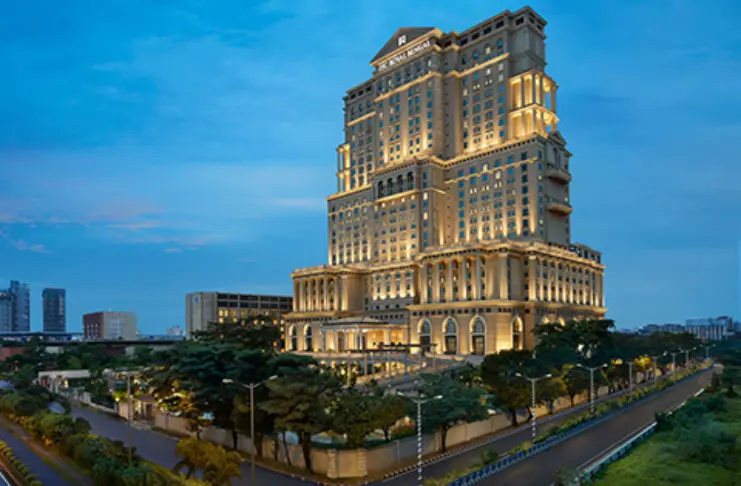ITC Hotels has reported a robust 44% year-on-year jump in revenues for FY25, clocking a turnover of ₹3,333 crore—a significant leap that signals growing momentum in India’s upscale hospitality sector. The results were announced as part of ITC Ltd’s Q4 and annual earnings, reinforcing the group’s growing emphasis on hotels as a standalone strategic growth vertical.
The impressive surge comes at a time when the Indian hospitality sector is experiencing a strong post-pandemic revival, fuelled by increasing domestic tourism, expanding MICE (Meetings, Incentives, Conferences, and Exhibitions) activity, and sustained demand in luxury travel.
Business Growth Driven by Asset-Light Expansion
In a detailed statement, ITC attributed the revenue boost to higher occupancy rates, premium ARRs (Average Room Rates), and strategic network expansion under its asset-light model. Over the past year, ITC Hotels signed and opened properties under its “Managed” and “Franchise” formats across tier-1 and emerging tier-2 cities—reflecting a decisive shift towards scalable, capital-efficient growth.
The chain, which operates multiple brands including ITC Hotels, Welcomhotel, Fortune, and Storii, added nearly 20 hotels to its portfolio in FY25 alone. This expansion is particularly aligned with the company’s focus on India’s growing appetite for destination tourism and experience-led stays.
Segmental Restructuring and Demerger on Track
A key development underpinning the brand’s renewed focus is the impending demerger of ITC Hotels from its parent company. The hospitality business is set to be listed separately, a move that has been in the works since last year and is expected to be completed in the coming months, subject to regulatory approvals.
The demerger, according to ITC Chairman Sanjiv Puri, aims to unlock value and attract long-term institutional investment specifically for the hotel vertical. For B2B stakeholders, this could signal new opportunities in strategic alliances, supply chain partnerships, and co-branded hospitality ventures.
Tailwinds from India’s Domestic Travel Boom
The FY25 growth figures also mirror wider macroeconomic trends shaping the Indian travel and hospitality industry. With over 80% of travel in India now domestic, brands like ITC Hotels are doubling down on leisure and business destinations across cultural corridors and state capitals. According to HVS Anarock, India’s hotel sector is expected to reach an occupancy rate of over 66% in 2025, with ARRs returning to pre-COVID highs—setting the stage for players like ITC to scale further.
Notably, ITC’s premium-to-luxury positioning has benefitted from increased discretionary spending among India’s middle and upper-middle class travelers. Additionally, rising inbound tourism, eased visa norms, and India’s growing stature as a global conference and wedding destination have further buoyed demand.
Implications for Restaurant Operators and F&B Leaders
From a restaurant industry standpoint, ITC’s performance sends strong signals about changing consumer behavior, particularly the rising demand for quality F&B experiences integrated within hotel environments. The chain’s emphasis on curated culinary brands, sustainability-driven sourcing, and hyperlocal menus has created a blueprint that other operators—both within and outside hotels—may look to emulate.
As hotels increasingly become lifestyle destinations, the lines between accommodation, food service, wellness, and entertainment continue to blur. For independent restaurateurs, cloud kitchen operators, and F&B tech providers, ITC’s growth underscores the importance of strategic partnerships with hotel chains and tapping into the premium hospitality ecosystem.





